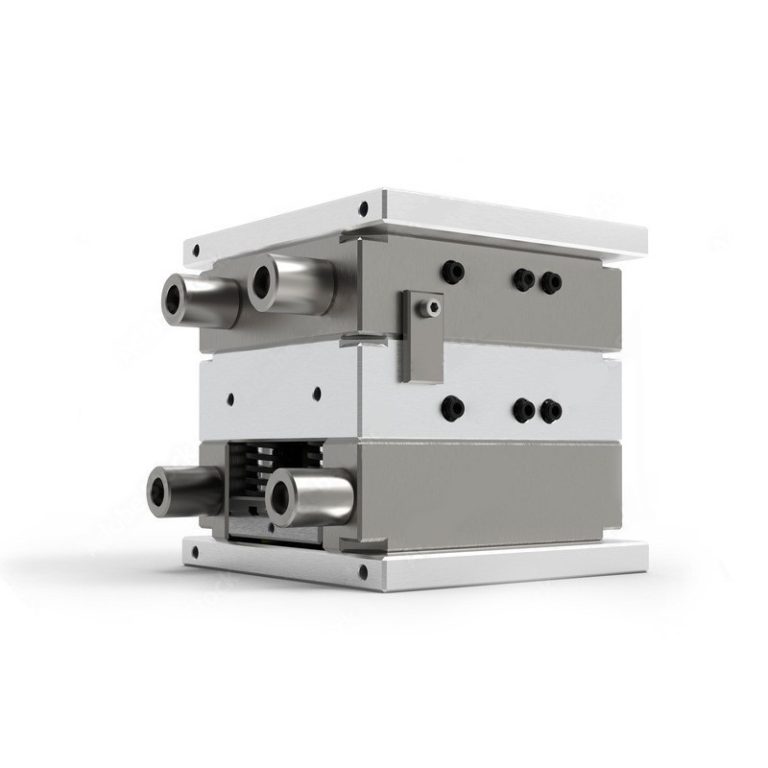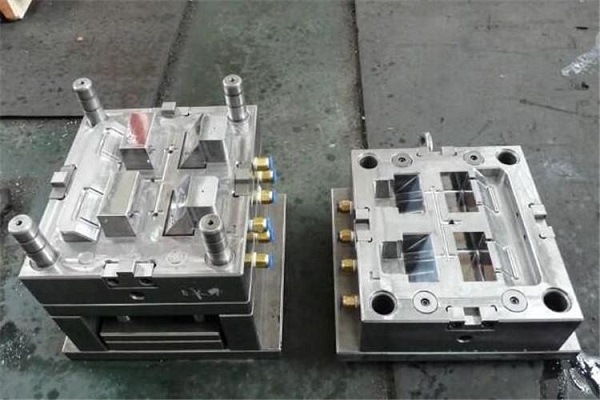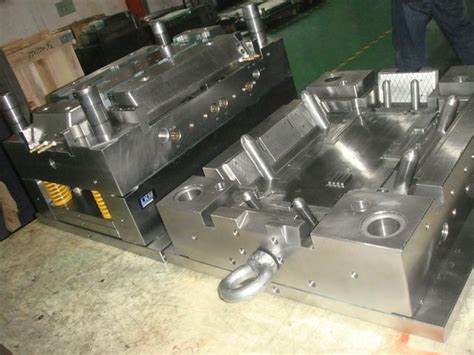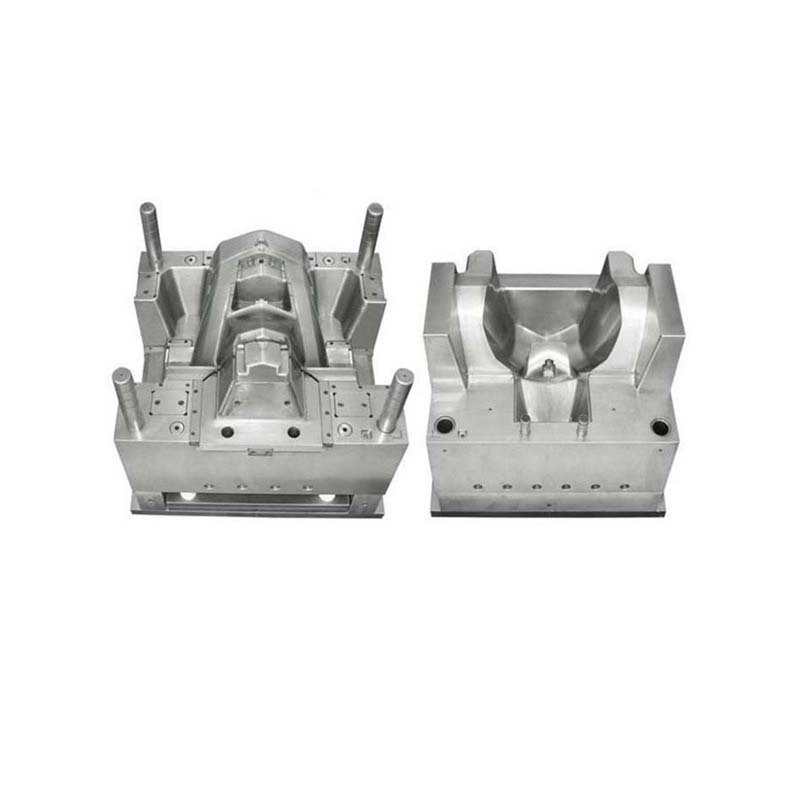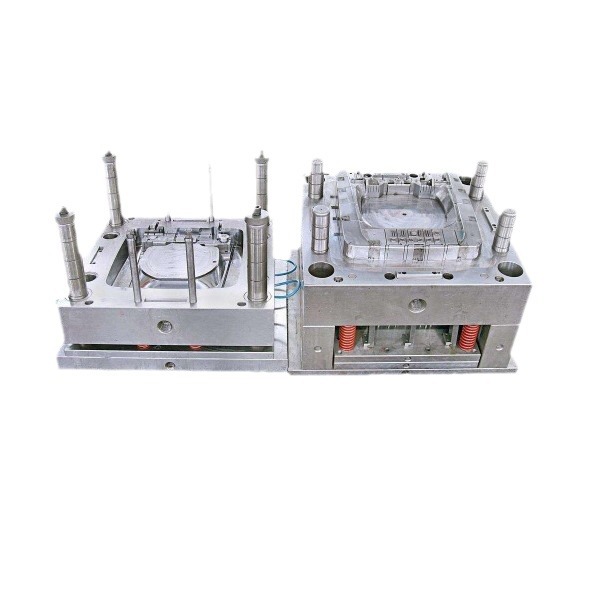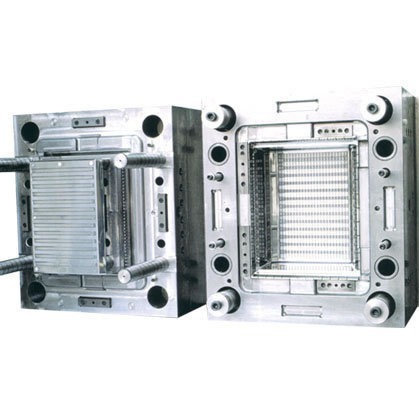Introduction
Plastic molds play a pivotal role in the production of plastic products. They are the key tools that transform raw plastic materials into a vast array of items we use in our daily lives, from small household utensils to large automotive components. The quality and efficiency of plastic product manufacturing largely depend on the performance of plastic molds.
Among the various elements of a plastic mold, the cooling system is of utmost importance. It significantly affects the production cycle, product quality, and overall productivity. An effective cooling system can shorten the cooling time of plastic products in the mold, thereby increasing the production rate. Moreover, it ensures uniform cooling, which is crucial for reducing product shrinkage, warping, and internal stress, resulting in higher - quality plastic products.
However, to achieve these benefits, the cooling water design of a plastic mold must meet specific conditions. In the following sections, we will explore in detail what these conditions are and why they matter.
Temperature Control
Optimal Temperature Range
The temperature of the cooling water in a plastic mold must be maintained within a specific range. Different plastics have different optimal cooling water temperature requirements. For example, for common plastics like ABS (Acrylonitrile - Butadiene - Styrene), the suitable cooling water temperature range is typically between 20°C - 60°C. When the temperature is lower than 20°C, the plastic may cool too quickly, resulting in internal stress and poor surface finish. If it exceeds 60°C, the cooling efficiency will decrease significantly, leading to a longer production cycle and potential product deformation due to uneven cooling.
For PP (Polypropylene), the appropriate cooling water temperature usually ranges from 30°C - 50°C. When the cooling water temperature is outside this range, for instance, if it is too high, the crystallization rate of PP will be affected, resulting in a decrease in product density and mechanical properties. If it is too low, it may cause difficulties in plastic filling and an increase in internal stress, which can lead to product cracking during or after the production process.
Uniform Temperature Distribution
The layout of the cooling water channels has a profound impact on the uniform distribution of temperature within the plastic mold. Uneven cooling can lead to a series of problems in plastic products. For example, it may cause product deformation. If one part of the mold cools faster than others, the plastic in that area will solidify earlier, while the still - hot plastic in other areas will continue to shrink as it cools. This differential shrinkage results in the product being pulled out of shape.
Moreover, uneven temperature distribution can also reduce the dimensional accuracy of products. In precision - molded parts, even a slight temperature difference can cause significant deviations in the final dimensions.
In the case of complex - shaped molds, optimizing the cooling water channels becomes more crucial. Take a mold for manufacturing a plastic automotive interior component with complex curves and varying wall thicknesses. To ensure uniform cooling, a combination of different - sized cooling channels and the use of baffles can be employed. Smaller channels can be placed in areas with thinner walls to increase the cooling rate, while larger channels can be used in thicker - walled areas. Baffles can be installed to change the flow direction of the cooling water, making the heat transfer more uniform across the entire mold surface, thus effectively improving the quality of the plastic product.
Flow Rate Considerations
Sufficient Flow for Heat Transfer
The flow rate of cooling water is crucial for efficient heat transfer in a plastic mold. A higher flow rate can enhance the heat - transfer efficiency. When the cooling water flows through the channels in the mold, it absorbs the heat from the plastic material being molded.
For small - sized molds with a cavity volume of less than 100 cm³, a recommended water flow rate is around 0.5 - 1.0 L/min when using common plastics like PE (Polyethylene). For medium - sized molds with a cavity volume between 100 - 500 cm³, the flow rate should be increased to 1.0 - 3.0 L/min. In large - sized molds with a cavity volume exceeding 500 cm³, a flow rate of 3.0 - 5.0 L/min is advisable.
If the flow rate is insufficient, for example, in a medium - sized mold with a flow rate of only 0.5 L/min instead of the recommended 1.0 - 3.0 L/min, the cooling time will be significantly extended. Studies have shown that a 50% reduction in the recommended flow rate can lead to a 30 - 50% increase in cooling time. This is because the heat - carrying capacity of the cooling water is limited, and it cannot remove the heat from the plastic as quickly as required, causing the plastic to cool slowly and thus prolonging the overall production cycle.
Balanced Flow in Multi - Cavity Molds
In multi - cavity molds, ensuring balanced flow of cooling water among different cavities is essential. If the flow is unbalanced, some cavities may cool faster or slower than others. For instance, in a four - cavity mold, if the cooling water flow to one cavity is 30% less than the others, the plastic product in that cavity will have a different cooling rate. This can result in differences in product dimensions, with the slower - cooled product being slightly larger due to more significant shrinkage during the extended cooling process.
To achieve balanced flow, several methods can be employed. Adjusting the diameter of the cooling water channels can help. Larger - diameter channels can be used for cavities that require more cooling water flow. The length of the channels also plays a role; shorter channels generally allow for a higher flow rate. Additionally, flow - control valves can be installed in the cooling water circuit. These valves can be adjusted to precisely control the flow rate to each cavity, ensuring that all cavities receive an equal amount of cooling water, thus promoting uniform cooling and consistent product quality across all cavities.
Water Quality Requirements
Prevention of Scaling and Corrosion
The quality of cooling water has a significant impact on the performance and lifespan of plastic molds. Impurities and minerals in the water, such as calcium, magnesium, and iron ions, can lead to scaling and corrosion issues.
Scaling occurs when these dissolved substances precipitate out of the water and form deposits on the inner walls of the cooling channels. These deposits act as insulators, reducing the heat - transfer efficiency between the cooling water and the plastic mold. For example, a scale layer with a thickness of just 1 mm can increase the cooling time by 20 - 30% in a typical plastic mold. This is because the scale layer impedes the transfer of heat from the mold to the cooling water, forcing the plastic to cool more slowly.
Corrosion, on the other hand, can damage the mold materials. When the cooling water contains corrosive substances, it can react with the metal of the mold, gradually wearing away the surface. This not only weakens the structural integrity of the mold but also affects the dimensional accuracy of the cavities. In severe cases, it can lead to leaks in the cooling system, which requires costly repairs or even mold replacement.
To prevent these problems, it is recommended to use de - ionized water in the cooling system. De - ionized water has had most of its mineral ions removed, reducing the likelihood of scaling and corrosion. Another option is to add water treatment agents, such as scale inhibitors and corrosion inhibitors. These agents work by either preventing the precipitation of minerals or forming a protective film on the mold surface to resist corrosion.
Microbiological Growth Control
Microorganisms can thrive in the cooling water environment, especially when the water temperature, nutrients, and pH levels are suitable. Microbiological growth in cooling water can cause several problems.
Firstly, the growth of bacteria, algae, and fungi can lead to the formation of biofilms. These slimy layers adhere to the inner walls of the cooling channels, reducing the effective cross - sectional area of the channels and potentially causing blockages. As the channels become blocked, the flow rate of the cooling water decreases, which in turn reduces the cooling efficiency. In extreme cases, a blocked cooling channel can cause hot spots in the mold, leading to product defects such as warping and uneven shrinkage.
Secondly, the presence of microorganisms can also affect the water quality. They can consume dissolved oxygen in the water, creating an anaerobic environment that may promote further corrosion. Some microorganisms can also produce acidic by - products, which increase the acidity of the cooling water and accelerate the corrosion process.
To control microbiological growth, regular cleaning of the cooling system is essential. This can involve physically removing biofilms and sediment from the channels and reservoirs. Additionally, adding biocides or bactericides to the cooling water can help kill or inhibit the growth of microorganisms. However, it is important to choose the right type and dosage of these chemicals to ensure they are effective without causing harm to the mold or the environment.
Pressure and Pressure Drop
Adequate Pressure for Water Circulation
The cooling system of a plastic mold must provide sufficient pressure to ensure the smooth circulation of cooling water. In general, for common plastic mold cooling systems, the recommended pressure range is typically between 0.5 - 1.5 bar. This pressure range ensures that the cooling water can flow through the channels in the mold without any hindrance.
When the pressure is insufficient, the water flow rate will decrease, leading to poor heat transfer efficiency. For example, if the pressure drops below 0.3 bar in a medium - sized plastic mold, the flow rate of the cooling water may be reduced by 30 - 50% compared to the normal situation. This slow - flowing water cannot effectively absorb the heat from the plastic material being molded, resulting in a longer cooling time and potentially affecting the quality of the plastic product, such as causing uneven cooling and internal stress issues.
Minimizing Pressure Drop
Pressure drop occurs due to various factors in the cooling water system. One of the main reasons is the friction between the water and the inner walls of the pipes. As the water flows through the pipes, it experiences resistance, which leads to a loss of pressure. Additionally, sharp bends, narrow passages, and the presence of fittings in the cooling water circuit can also contribute to pressure drop.
Excessive pressure drop can have a significant negative impact on the cooling effect. If the pressure drop is too large, the pressure at the end of the cooling water circuit may be too low to maintain an adequate flow rate. This can result in uneven cooling, as some areas of the mold may not receive enough cooling water. For instance, a pressure drop of more than 0.5 bar in a complex - shaped mold can cause a 20 - 30% difference in the cooling rate between different parts of the mold, leading to product defects like warping and shrinkage.
To minimize pressure drop, optimizing the design and layout of the cooling water pipes is essential. Using smooth - walled pipes with a larger diameter can reduce friction. For example, increasing the pipe diameter by 20% can reduce the pressure drop by approximately 30 - 40%. Avoiding unnecessary bends and keeping the length of the pipes as short as possible also helps. In addition, using high - quality fittings that have a smooth internal structure can further reduce the resistance to water flow, thus minimizing pressure drop and ensuring efficient cooling of the plastic mold.
Compatibility with Mold Materials
Avoiding Chemical Reactions
The cooling medium in a plastic mold must be compatible with the mold materials. Some cooling media can react chemically with specific mold materials, leading to severe damage. For example, if a mold is made of aluminum alloy, using water with a high chloride ion content as the cooling medium can cause a chemical reaction. Chloride ions can penetrate the protective oxide film on the aluminum surface, initiating a corrosion reaction. This reaction not only weakens the mechanical strength of the mold but also affects the surface finish of the mold cavities, resulting in poor - quality plastic products.
Another case is when a copper - based mold is used, and the cooling water contains substances that can react with copper, such as certain acids or oxidizing agents. These substances can cause copper to corrode, leading to the formation of pits and roughness on the mold surface. As a result, the heat - transfer efficiency of the mold is reduced, and the dimensional accuracy of the plastic products is compromised.
Therefore, it is crucial to select a cooling medium that does not react with the mold materials. When choosing the cooling water, its chemical composition should be carefully analyzed. For molds made of common materials like steel, de - ionized water with appropriate additives is a good choice as it has a low reactivity and can effectively reduce the risk of chemical reactions and corrosion, ensuring the long - term stable operation of the plastic mold and the high - quality production of plastic products.
Yigu Technology's Perspective
As a non - standard plastic metal products custom Supplier, Yigu Technology deeply understands the significance of a well - designed cooling system in plastic molds. With years of experience, we have successfully designed cooling systems for various complex plastic molds.
We employ advanced simulation software like Moldflow to optimize the cooling water design before actual production. This allows us to predict potential issues such as uneven temperature distribution and insufficient flow rate in advance and make corresponding adjustments. For example, in a project involving a complex - shaped plastic part for the electronics industry, through simulation, we found that the original cooling channel layout would cause significant temperature differences. After optimization, we were able to reduce the temperature difference by 30%, resulting in a 20% improvement in product quality and a 15% reduction in production cycle time.
Moreover, we offer customized cooling system solutions according to different mold materials, plastic types, and product requirements. We always prioritize the cooling system design to ensure the best performance of the mold and high - quality product output.
